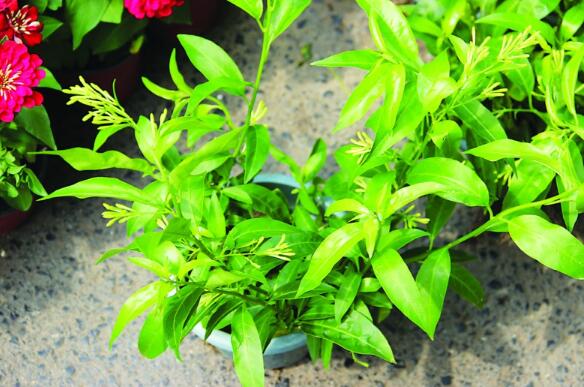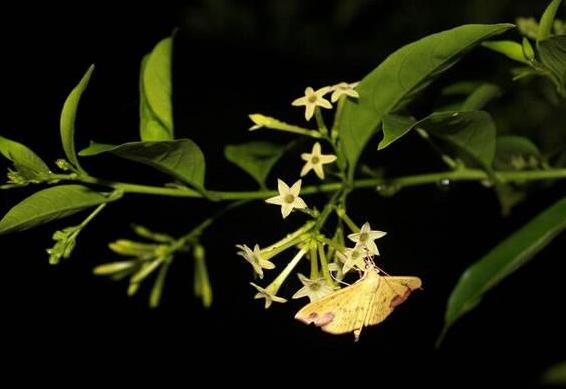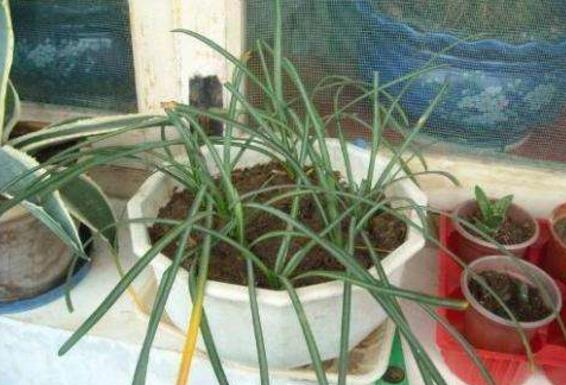How to get rid of bugs on night incense, pest control / dichlorvos control
Nocturnal incense, a kind of flower that blossoms at night and is deeply loved by people, is kept at home by many flower friends. However, in the process of breeding, there will inevitably be some problems, such as growing bugs, how to remove the worms on the night incense? Diseases and insect pests are the main reasons that threaten the growth of night incense. The following is the pest control of night incense carefully organized by Xiaobian. People who love flowers must understand.
First, how to get rid of the worms on night incense

In the culture method of evening incense, we know that evening incense has high requirements on soil, moisture, light and so on. Once it is not properly maintained, it will get sick. However, there are mainly two kinds of diseases, diseases and insect pests, and the control methods are also different. How to remove the growing bugs on night incense, the specific methods are as follows:
(1) incense pests at night
How to get rid of bugs on night incense? At this time, we should not be in a hurry, but should find out what kind of pest it is, and then solve it. It is understood that night incense pests are mainly shell insects, aphids, mites, whitefly and so on. The specific symptoms and solutions are as follows:
① scale
Scale insects are the most common pests on night incense, which often cluster on branches, leaves and fruits, absorb plant sap for a living, and cause branch wilting or whole plant death in serious cases. In addition, the secretions of shell insects can also induce coal fouling disease and do great harm.
Solution: scale insects are small, often gather together and secrete wax, which looks like a pile of white wax powder. Just pick it off with a stick and crush it to death. Or spray 1000 times of dichlorvos solution to kill. Uranus, cypermethrin and Kuaishaling can also be used for prevention and control.
② aphid
Aphids commonly known as greasy insects, it is very small, about 1 mm, black-green, winged, rapid reproduction, mainly against the leaves, stems and top buds of night incense. Since the terminal buds of evening primrose are the most tender, aphids like to eat there most, and the tender terminal buds are not easy to deal with by hand, which is a headache and a very thorny thing.
Solution: omethoate 1 can be sprayed with 150 times the solution. Omethoate is an internal type of broad-spectrum insecticide, which can be absorbed into the human body by the stems and leaves of the plant, and can be transmitted to the place where the liquid is not sprayed, so that the above harmful pests are poisoned to death and can be cured 1-2 times. When there are a large number of aphids, it is recommended to slowly irrigate the liquid once to put an end to the disease.
③ mites
The mite arachnid pest is one of the important pests that endanger the night incense. In China, it is mainly distributed in South China, Central China, Northeast and North China and other areas. Solution: can be used to spray anti-mite 25% EC 800x solution, 73% propargite 2000 times solution and other drugs.
④ whitefly
Whitefly is a kind of small herbivorous piercing insects, which is mainly caused by nymphs and adults, whitefly can not be ignored in the insect pests. Solution: can use anti-mite 23 EC 800x solution, 73% propargite 2000 times solution and so on.
(2) the disease of night incense and its control.
The main pests that harm night incense are the above, and the main diseases are Fusarium wilt, coal pollution and ring disease. The specific symptoms and solutions are as follows:
① Fusarium wilt
A plant disease caused by fungi or bacteria that occurs suddenly and includes severe spots, wilting, or death of leaves, flowers, fruits, stems, or whole plants. Fast-growing young tissues are often invaded. Most important cash crops are infected by one or more diseases. Blight can affect flowers, leaves, buds, seedlings, twigs, stems (vines) and top shoots.
Solution: can spray wilt Rick 600 times 800 times solution, 50% carbendazim 600 times solution and so on. In addition, the diseased branches were cleared and burned in time, and quicklime was sprinkled in the soil around the diseased plants, which played the role of insecticidal and sterilization.
② coal pollution disease and ring disease
Coal pollution disease, mainly refers to the harmful ingredients in coal, more coal in the home, will harm the growth of night incense; ring disease is a disease spot in the process of development, the leaf vein is reddish brown, surrounded by dark green to yellowish green, and the interior is brown or dark brown. The disease spot of the lobule is less, and soon it is in the shape of a wheel, forming many small black spots.
Solution: coal pollution disease and ring disease can be sprayed with 500 times of 50% methyl topiramate wettable powder.
Prevention and control of diseases and insect pests of night incense
Coal pollution disease and ring disease often occur. 50% methyl topiramate wettable powder can be used to spray alcohol. Insect pests are harmful to shell insects and whiteflies, which are sprayed with 1000 times of 50% fenitrothion EC.
Cultivation and control of diseases and insect pests of night incense
Night incense, also known as nocturnal incense, is native to tropical America. Like warm, humid and sunny ventilation environment, strong adaptability, but not cold-resistant, requires fertile, loose and slightly acidic soil, the winter temperature is not lower than 5 degrees.
Propagation: commonly used cuttings, ramet, sowing and propagation. Cuttings, preferably in spring and autumn, cut mature branches 10murmur12cm long, put them in a sand bed, and take root in about 30 days. Ramets can be combined with changing pots in spring. Sow, sow in May, and sprout 2 weeks after sowing.
Cultivation: the growing period should be watered in time and fertilized once every semimonthly. After flowering, the withered branches and overdense branches were cut off, and the overgrown branches were truncated. Nanjing area should be moved into indoor maintenance in winter.
Diseases and insect pests: coal pollution disease and ring disease often occur. 50% methyl topiramate wettable powder can be used to spray alcohol. Insect pests are harmful to shell insects and whiteflies, which are sprayed with 1000 times of 50% fenitrothion EC.
Application: nocturnal incense trees are slender, bloom in summer and autumn, and yellow-green flowers bloom in the evening. They are often used to decorate courtyards, windows, ponds and pavilions in the south.
- Prev

Evening incense leaves yellowing how to do, master 5 points of flower worry-free / watering light is the key
Night incense, a common indoor flower, blossoms at night, the fragrance of the flowers is overflowing, and it does not look very beautiful. However, in the process of breeding, flower friends often encounter some problems, such as yellow leaves, then night incense leaves yellow how to do? First of all, we need to calm down, then carefully examine the cause, and then solve the problem.
- Next

What if the leaves of the flowers on the other side turn yellow, and the pest control / watering of the flowers on the other side should be appropriate.
As a flower full of legends, the other shore flower is very attractive to many flower friends. However, in the process of raising, beginners will always encounter some problems, such as yellowing leaves, then what about the yellowing leaves of the flowers on the other side? First, we need to find the cause, and then we can target it.
Related
- Fuxing push coffee new agricultural production and marketing class: lack of small-scale processing plants
- Jujube rice field leisure farm deep ploughing Yilan for five years to create a space for organic food and play
- Nongyu Farm-A trial of organic papaya for brave women with advanced technology
- Four points for attention in the prevention and control of diseases and insect pests of edible fungi
- How to add nutrient solution to Edible Fungi
- Is there any good way to control edible fungus mites?
- Open Inoculation Technology of Edible Fungi
- Is there any clever way to use fertilizer for edible fungus in winter?
- What agents are used to kill the pathogens of edible fungi in the mushroom shed?
- Rapid drying of Edible Fungi

